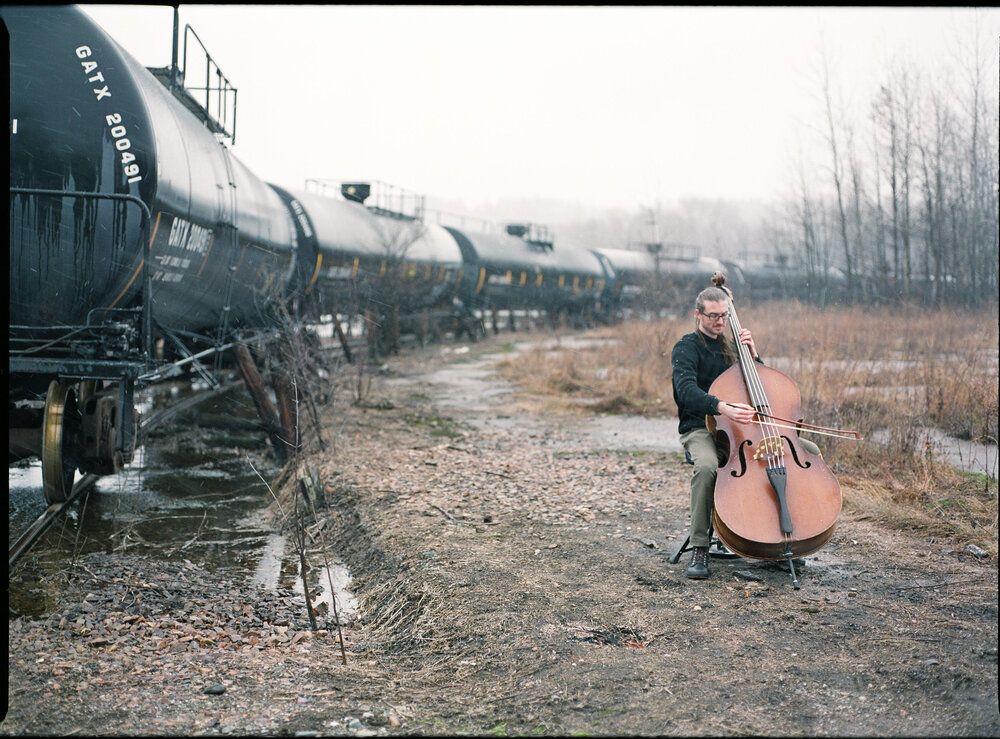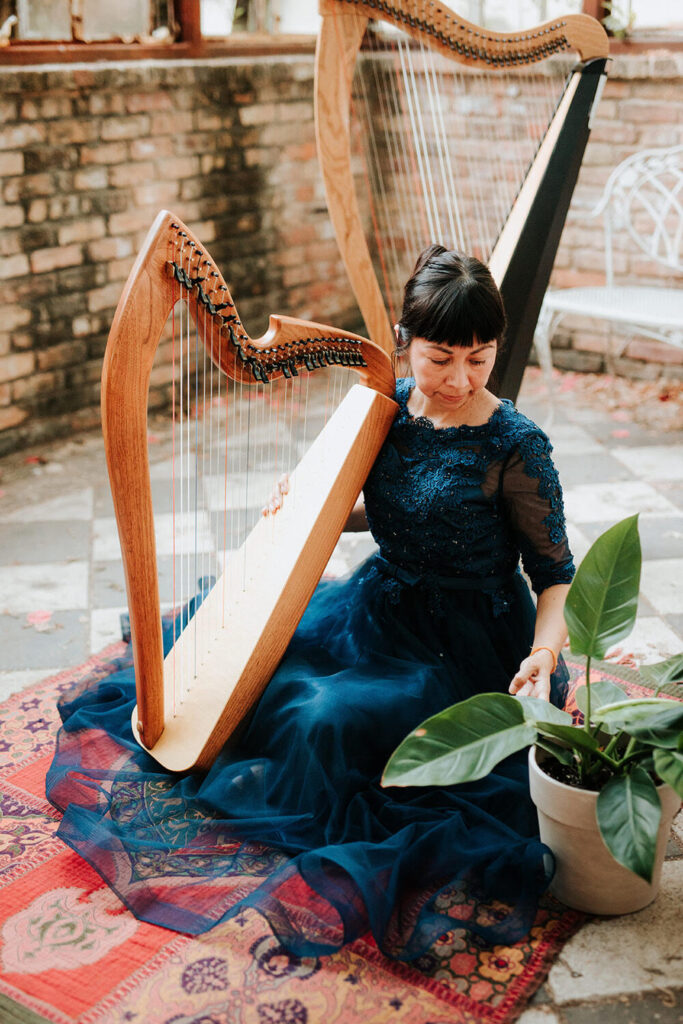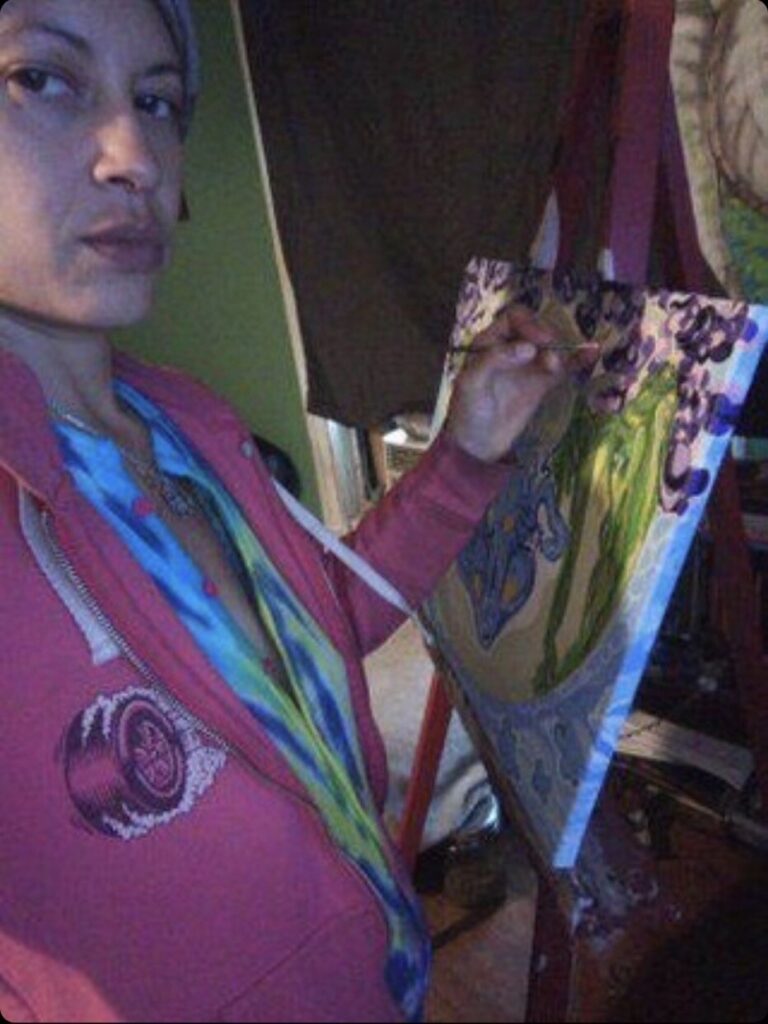
Photo credit: Mira Steinzor
Gahlord Dewald is a double bassist and electronic musician based in New England. His work encompasses free improvisation, notated compositions, and experimental music practices rooted in the physicality of sound and his instruments.
He is a musical collaborator, working with Toussaint St. Negritude in Jaguar Stereo!, Anne Leilehua Lanzilotti in The Yes &, performing with singer/songwriter Ariel Zevon, and a frequent collaborator in many ad hoc improvisation/noise shows throughout New England and beyond. He is also a co-founder of Community of Sound, an experimental music incubator in Burlington, Vermont.
COTFG – What were your musical or general artistic influences for your historical work or current projects?
I’m influenced by exploring sound textures. The materials I work with—double bass, electric bass, a variety of electronic things—are the core inspiration along with a feeling of “Hey, what happens if I do this?” For example, on my recent album Coherent Light Enclosed Without, I’m drawing inspiration from how the sound of the double bass works in an incredibly reverberant real world space, a space that is itself situated in the real world with sounds inside and outside that make their way in.
I’m also inspired by how people organize themselves around sound in terms of listening/participating as well as in terms of making and distributing sounds in the world. People like Sun Ra or Paul Robeson starting labels so that they can make and distribute their work helps me look beyond the usual status-driven signifiers attached to record labels. The commercial organization of Wu-Tang Clan helps me understand different ways of realizing collaborative work. The old school punk/DIY/thrift ethos of endless touring in a van a la Fugazi or The Minutemen is an inspiration for reaching every person that I can with whatever resources I have. Musically, I’m inspired by Anne Leilehua Lanzilotti’s use of extended techniques for string instruments, I’m constantly trying to translate what she’s doing on viola to something I can do on the double bass to expand the range of sounds available to me.
Without these kinds of inspirations it would be easy to lose sight of why I make these sounds: to help connect and situate us together in the physical world.
What other ways of expression do you hope to explore using recorded video or live streaming ?
I’m sort of torn about livestreaming. On the one hand, much of what I do relies on acoustic space or materials and might involve incredibly small sounds. These things don’t survive the compression algorithms well. But on the other hand, it’s so nice to see and hear people; the digital distribution of live performance has been a vast improvements for some accessibility challenges.
I’ll keep trying though, we’ve got lots of time left before live performance is going to be safe. I guess I need to figure out what we’re experiencing together in digital performance. I have a feeling that some of Arthur Jaffa’s ideas can help here.
What have you been listening to lately?
So many things! I’ve been using the pandemic to listen more, here are just a few:
Kahil El’Zabar’s America the Beautiful on Spiritmuse Records: I had the chance to catch El’Zabar live with David Murray on Juneteenth in 2019 at Light Club Lamp Shop in Burlington (a venue supportive of creative music that didn’t make it through the pandemic). His music feels directly charged, the kind of spirit I want to take forward into the world. The layers and textures of sound on this are a force to be reckoned with.
Paul Robeson (all the recordings): I’ve loved Robeson’s voice since I was very young. When I’m making sound as a bassist it’s his voice that I’m holding in my mind as an aspiration. His spirit, organizing capacity, and use of technology as a performing medium (he gave some of the earliest “livestreaming” performances!) have also been getting me through. Recent scholarship by Dr. Shana Redmond has been focused on his work and that’s been great reading to go along with the sound.
Maria Chavez’s EMPAC Sessions 2 on Bandcamp: There aren’t many documents of Chavez’s work; these just came out. Her manipulation of time (musical/metaphorical/real) and the textures within the work are intriguing and something that I hope everyone makes time to hear.
What does experimental/avant-garde mean to you?
At one of the last shows I played before the pandemic hit, my collaborator Toussaint introduced our set by saying “What we are going to do here is called ‘free improvisation’ or, in any other place in the world, is simply called ‘making music.’”
I acknowledge the utility of the term “experimental music” but it often excludes more than it connects. Now’s a good time to start dismantling this sort of language, which is mostly about marketing. The conversation inside the marketing department is something like, “Well we got country, jazz, rock, R&B, classical, and then all this stuff we don’t know how to make money with.”
In our capitalist system, the “experiment” is more of a business market-fit exercise. As a result, “experimental/avant-garde” most often means something marketed to a mostly white, mostly upper class (or middle class aspiring to upper class, but wealthy enough that college is a given, for example), and probably cis-man audience.
“Experimental” might easily include someone like John Cage yet exclude someone like Charlie Parker or Ornette Coleman, include someone like Conlon Nancarrow yet exclude someone like Cecil Taylor, celebrate Philip Glass yet reduce to a footnote someone like Julius Eastman or Yoko Ono. In these ways, the genre categories don’t really help us be together and experience sound together—which isn’t surprising given the term used by institutions to describe all of this is “market segmentation.”
A more inclusive approach is to recognize that experimentation is a creative practice—we try things, we hear if they work (whatever “work” might mean in our specific contexts). We might focus our experimentation on different parameters of sound/performance/organization/production. Through experimental practices we can find new ways of solving problems together.
You can find out more about Gahlord’s work at : https://gahlorddewald.com and https://gahlorddewald.bandcamp.com

